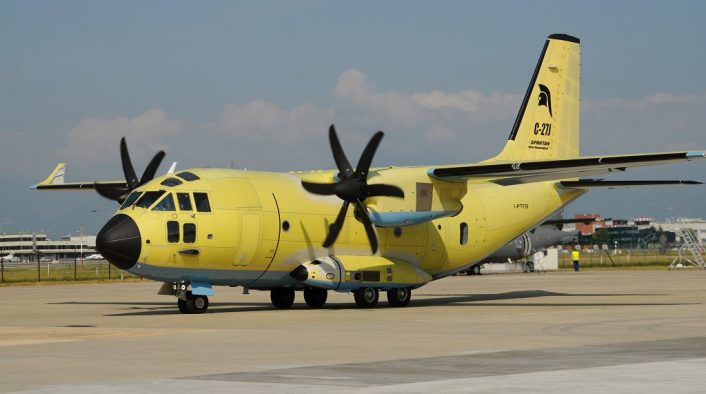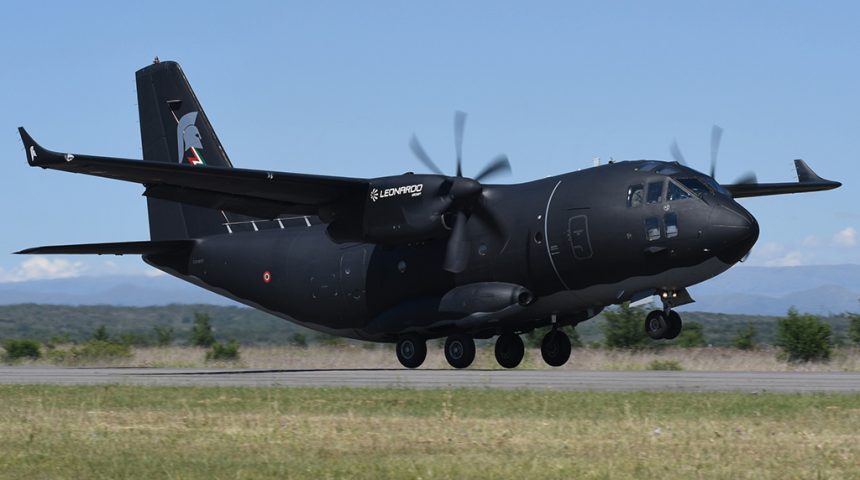Azerbaijan becomes 17th nation to buy the Leonardo C-27J.
“The commercial collaboration between Italy and Azerbaijan has been strengthened with the signing of the contract for the supply of the C-27J Spartan,” says a press release issued by Leonardo on Jun. 8, 2023, to announce the addition of the Azerbaijan Air Force to the list of operators of the C-27J airlifter. The contract was inked in Italy by an Azerbaijani delegation in the presence of representatives of the Defence Ministers of the two countries.
The contract, worth an unknown value and an unspecified number of aircraft, is the result of the growing ties between the two nations, that started on the energy sector and has now extended to the defense field: Azerbaijan supplies gas to Italy (that has looked at Baku as an alternative to the Russian gas) via the Trans Adriatic Pipeline (TAP), the gas corridor used to transport natural gas from the Shah Deniz II field in Azerbaijan.
According to Leonardo, the agreement is part of the extensive modernisation programme of the Azerbaijani Armed Forces, which are increasingly looking to the products of Italian industry.
Dealing with the variant, the aircraft purchased by Azerbaijan is certainly the C-27J NG (Next Generation), that has long been the Spartan’s production baseline. Here are some details about the aircraft we already published in a detailed article published in 2020:
The improved aircraft features new equipment, avionics and aerodynamic devices, most notably new winglets, that are intended to boost even more the performance and reliability of the Spartan.
After the announcement about the C-27J Next Generation, Leonardo published on its website an interview with the company’s test pilot Matteo Maurizio, Head of Project Test Pilot Airlifters, Special Versions and UAS, who has been involved in the development of the new variant of the Spartan since its first test flights. Here is how he describes the improvements:
The main differences relate to the aircraft’s flying qualities and performance. In terms of quality, I must stress that the new state-of-the-art avionics technology fully complies with the most up-to-date international standard, called Performance Based Navigation and to have in the cockpit new features as FANS1/A+ Datalink, TCAS 7.1, ILS Cat II and Enhanced Video TAWS. This enables us to exploit all the capabilities offered by the operation in civil air spaces with no limitations and to enhance interoperability in tactical military scenarios with the integration of Mode 5 IFF/ADS-B out, tactical VNAV and Search and Rescue.
The new cockpit layout includes five new Colour Multipurpose Display Units – featuring new and enhanced LED lighting and panels that increase pilots’ efficiency during a flight – a dual redundant Flight Management System, two Digital Autopilot-Flight Director Systems with auto-throttle capabilities, and a comprehensive communications suite. For intra-theatre operations, these features, coupled with the many large cockpit windows typical of the Spartan, full cockpit compatibility with NVIS/NVG night vision systems and Head-Up Display availability help to minimise pilot workload while increasing the ability to manage the mission effectively in day, night and adverse weather conditions.
In terms of performance, the new winglets offer us several advantages in terms of aircraft controllability, in particular flying at slow speeds, as well as better payload capability also in hot and high conditions.
While its cruising speed of 325 KTAS (602 km/h) and service ceiling of 30,000 ft (9,144 m) will not change with the new configuration, the winglets will improve the aircraft’s climb capabilities in terms of climb gradients or MTOW of approximately 1,000 kg. This will allow us to operate from those airports with particularly steep climb gradients, which are normally served by four-engine aircraft.
In addition to the classic tactical transport and airdrop of troops and cargo, MEDEVAC/CASEVAC, firefighting, humanitarian assistance and disaster relief support, the C-27J can perform also VIP transport, firefighting, ISR (Intelligence, Surveillance and Reconnaissance), Maritime Patrol and tactical support missions by using multiple roll-on/roll-off palletized mission kits and systems which allow a quick preparation for the new mission.
One of the configurations obtained with the use of the aforementioned kits is the MC-27J Praetorian variant or the EC-27J JEDI (Jamming and Electronic Defense Instrumentation), a modified Spartan able to perform Electronic Warfare missions and prevent insurgents from using electronic devices to remotely detonate Improvised Explosive Devices (IEDs).










